- Otis Prentiss Mills opened Mills Manufacturing Company in 1897.
- By the 1920s, Mills Mill Village consisted of 250 homes with more than 1,000 residents, sports fields, a tennis court, a playground, croquet grounds, a small school, a church, and a store.
- MetroConnects was recently awarded $10 million in SCIIP funds to replace and rehabilitate the Village’s sewer system, which was installed between 1915 and 1918.
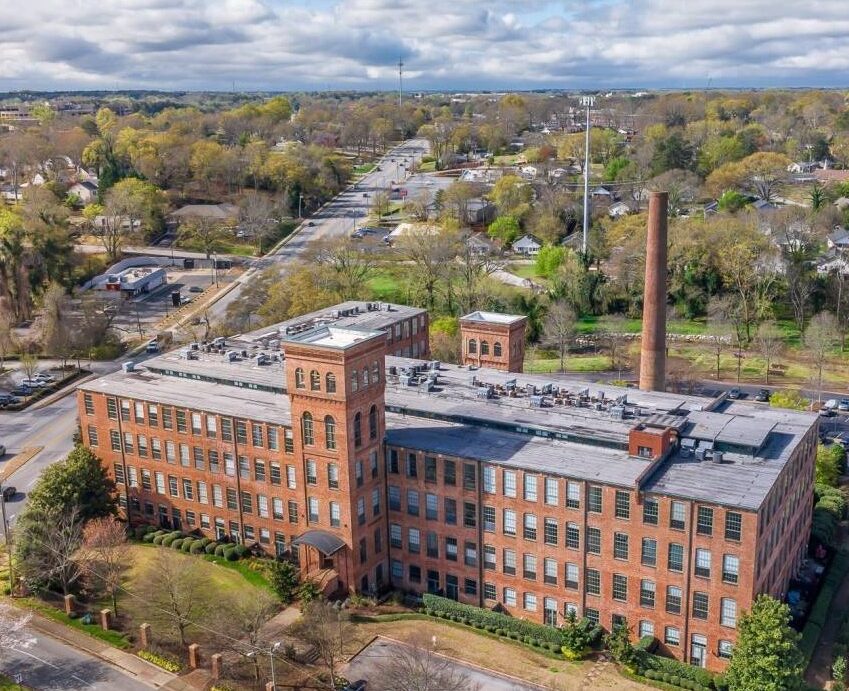
An Entrepreneur’s Vision
In 1895, the aptly named entrepreneur Otis Prentiss Mills began taking steps to open one of Greenville County’s first cotton manufacturing enterprises, Mills Manufacturing Company. In 1897, the Romanesque-style 5,000 spindle mill named Mills Mill began operating, bringing with it a group of 200 operatives who would become part of Greenville County’s growing Mills Mill Village community. O.P. Mills built 120 homes surrounding the mill to house the operatives. Shortly after, he began growing the community, adding a two-story building that served as a store and meeting area. The building still stands at the corner of Otis and Guess Streets. He also built a small school, a YMCA, a church, and a public library to what is now known as the Mills Mill Village. By 1903, more than 1,000 people lived in the 250 houses in the village, which stretched from the mill (now the Lofts at Mills Mill) northeast to Augusta Street, bounded by Otis Street and Mills Avenue (both of which are named after O.P. Mills, along with E. and W. Prentiss Ave., just south of Mills Avenue). O.P. Mills’ home was located at the edge of the village on Mills Road, where InStride Piedmont Podiatry sits today. While the austere home is no longer standing, several others in the area mimic its grand style.
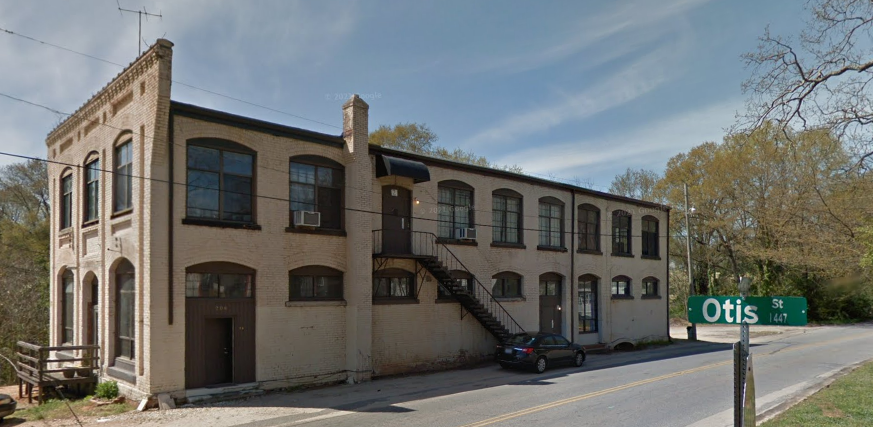
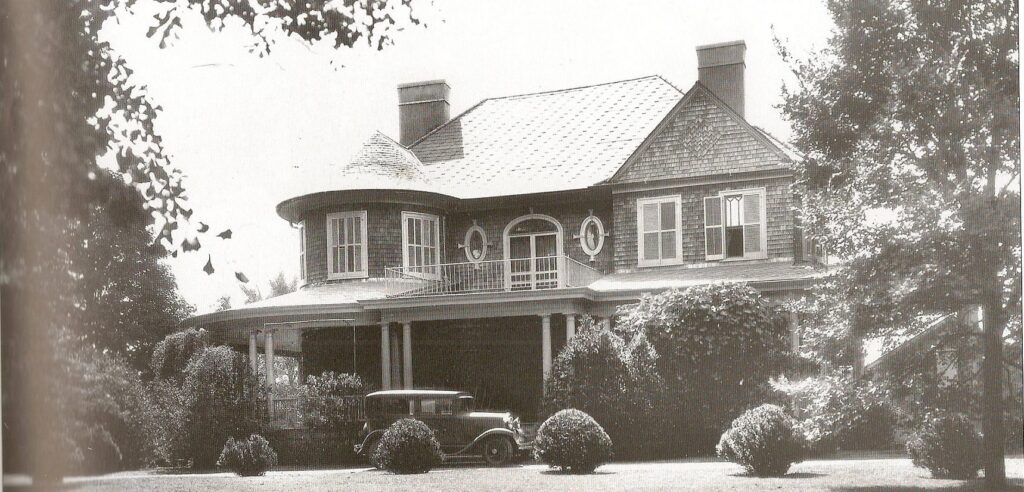
A Community Forms
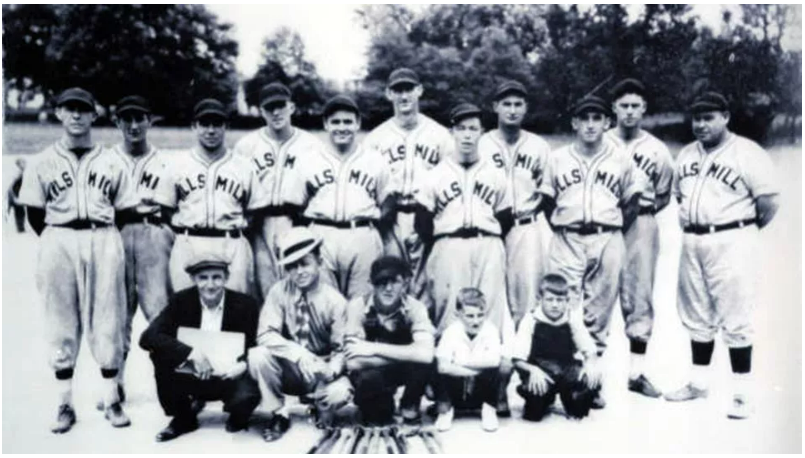
After Mills’ death in 1915, his son-law, Walter B. Moore, took over the business. Like owners before him, he knew that to keep workers working, he had to keep them satisfied with their basic living conditions. He set about beautifying the village, hiring a landscape architect and gardener, and adding basic infrastructure for the village houses, including running water and a sewer system. After Moore’s death just a few years later, the mill was sold to the Reeves Brothers Company, which continued to grow the community, building a tennis court, a playground, croquet grounds, and what has been called the “Most Progressive Grammar School” in the state. The Reeves Brothers Company also sponsored the Mills Mill Textile League baseball team. The Textile League was at the heart of community life, with fierce rivalries forming between competing villages. The fields became places where workers could take a break from the daily grind of mill labor, young people could socialize with youth from other villages, and mill owners could capitalize on the boost to employee morale that winning teams and star players provided.
A Period of Unrest
Fervor for Textile League Baseball aside, life in the mills was difficult, especially as the Great Depression slowed manufacturing. Pay was low, days were long, and few safety measures were in place. To address the economic downturn, many area mills began instituting a “stretch out,” which meant that fewer low-paid workers were tasked with running more machines in order to decrease costs for the mill owners. In March of 1929, workers at several mills, including Mills Mill, staged a walkout, demanding better pay and stating support for formalizing a labor union. The South Carolina General Assembly formed a committee to investigate conditions at the mills, which they found to be “deplorable.” Despite the committee’s support, however, mill workers and owners reached an agreement that did little to support the workers. (See the National Register of Historic Places Evaluation for Brandon Mill to learn more about the strike and economic conditions of the mills.)
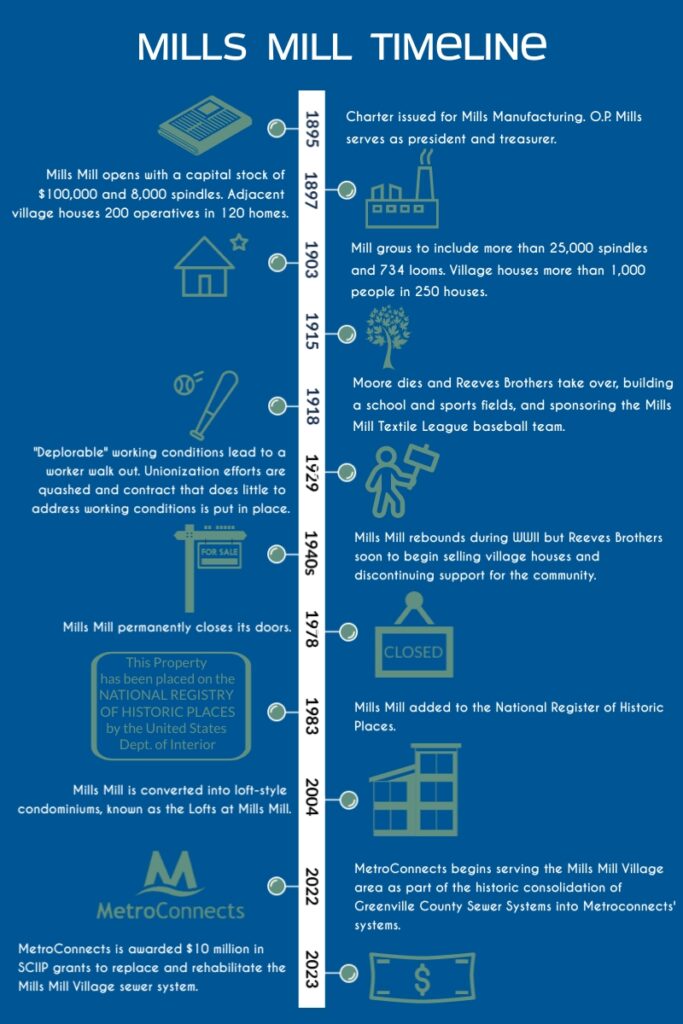
The mill experienced something of a revival during World War II, when it produced herringbone fabric for Marine uniforms, and in the years immediately following. However, support for the community built around the mill dwindled. The Reeves Brothers Company began selling village houses in the 1950s, discontinued maintenance and security in the villages, and no longer sponsored the sports teams. By the industrial decline of the 1970s, the plant was struggling. Two hundred workers were dismissed in 1977 and the mill closed permanently in 1978. The mill site was added to the National Register of Historic Places in 1983, and was used for various forms of commerce until the 2000s when it was converted into lofts. The rest of the Mills Mill Village Community, like many older communities throughout Greenville County, is struggling to maintain its historic charm and affordability for long-time residents while also making room for Greenville’s rapid growth and development.
Mills Mill Village Infrastructure
Much of the original infrastructure in Mills Mill Village area remains operative today, more than 100 years after it was installed. And while something can be said for the quality of work that survives a century’s worth of use, the lives of the clay pipes that make up the sewer system are coming to an end. Cracks, leaks, and ruptures in the deteriorated pipes can lead to backups and Sanitary Sewer Overflows (SSOs) in or near homes (some of the old manholes that provide access points to the sewer can actually be found inside basements) and contaminate nearby water supplies.
To head off these disasters, MetroConnects applied for and was awarded $20 million in South Carolina Infrastructure Investment Program funds by the S.C. Rural Infrastructure Authority! MetroConnects will be busy rehabilitating and replacing sewer systems throughout the Mills Mill Village and Dunean Mill Village, helping to preserve the historic mill village area while also supporting Greenville County’s growth into the future. Take a look at the next installment of MetroConnects’ The Textile Crescent and the Making of Greenville at www.metroconnects.com/recent-news. Keep an eye out for the next installment featuring the Dunean Mill and Village.